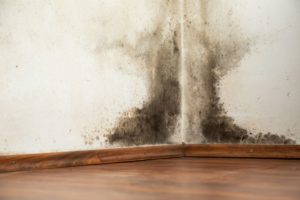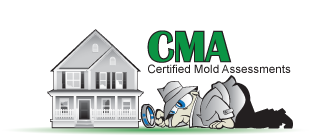 Americans have been living with mold for a long time. It’s only in recent years that public health organizations and modern medical science have allowed a closer look into the risks posed by this microscopic invader. The health problems cause by mold are usually what people are most interested in learning about, and for good reason. Mold exposure can lead to a long list of nasty side effects, and it can seriously affect quality of life. But property values and financial wellbeing can also be at risk if mold growth is left unchecked.
Americans have been living with mold for a long time. It’s only in recent years that public health organizations and modern medical science have allowed a closer look into the risks posed by this microscopic invader. The health problems cause by mold are usually what people are most interested in learning about, and for good reason. Mold exposure can lead to a long list of nasty side effects, and it can seriously affect quality of life. But property values and financial wellbeing can also be at risk if mold growth is left unchecked.
So what will the mold inspection process actually be like? What happens when you call a mold inspector to your home and business?
Of course, the consultation will start with a conversation about any problems you may have noticed, including visible mold, sources of moisture, or even health problems. Are you suspicious that mold is growing unseen, or is this simply a preventative measure?
After the consultation, most mold inspectors will dig right in. They’ll look for signs of mold growth, taking the property’s age and history into account. They’ll use their years of training and experience to look for signs and sources of mold throughout the property. Highly reputable inspectors will also use infrared imaging to find moisture beneath floors, behind walls and above ceiling. This technology is important as it gives the inspector a clear view of what’s going on “behind the scenes.” Statistics show that mold inspections using infrared imaging are much more successful — so be sure to ask ahead of time if your mold inspection specialist uses this technology.
Your mold inspector will not only be looking for mold, but specific types of toxic mold. He or she will also be looking for ways in which mold growth may have compromised the structural integrity of the property, such as rotting wood in attics or crawl spaces.
When visible signs of unwanted mold are detected, the inspector should have the proper equipment to collect samples. Later, in a laboratory setting, the inspector will be able to determine with scientific certainty exactly what type of mold is growing in your home.
Remember, a quality mold inspection isn’t just about finding the mold that’s already growing. It’s about finding the underlying structural and/or environmental problems that are allowing mold to flourish. Experience mold inspectors know that unless these underlying issues are addressed once and for all, mold growth will be a recurring problem.
Finding the best mold inspector in your area
There might be a number of professional mold inspection services in your area, but you need to know you’re getting something truly professional. After all, you’re trusting someone to pick up on the presence of something that is often invisible, and can pose serious risks to your health and property. The mold inspector you choose should be able to demonstrate years of experience, a long list of satisfied clients, and comprehensive mold inspection methods/knowledge that includes the latest scientific equipment. Then you’ll be able to get on with keeping your home truly free of harmful mold.

